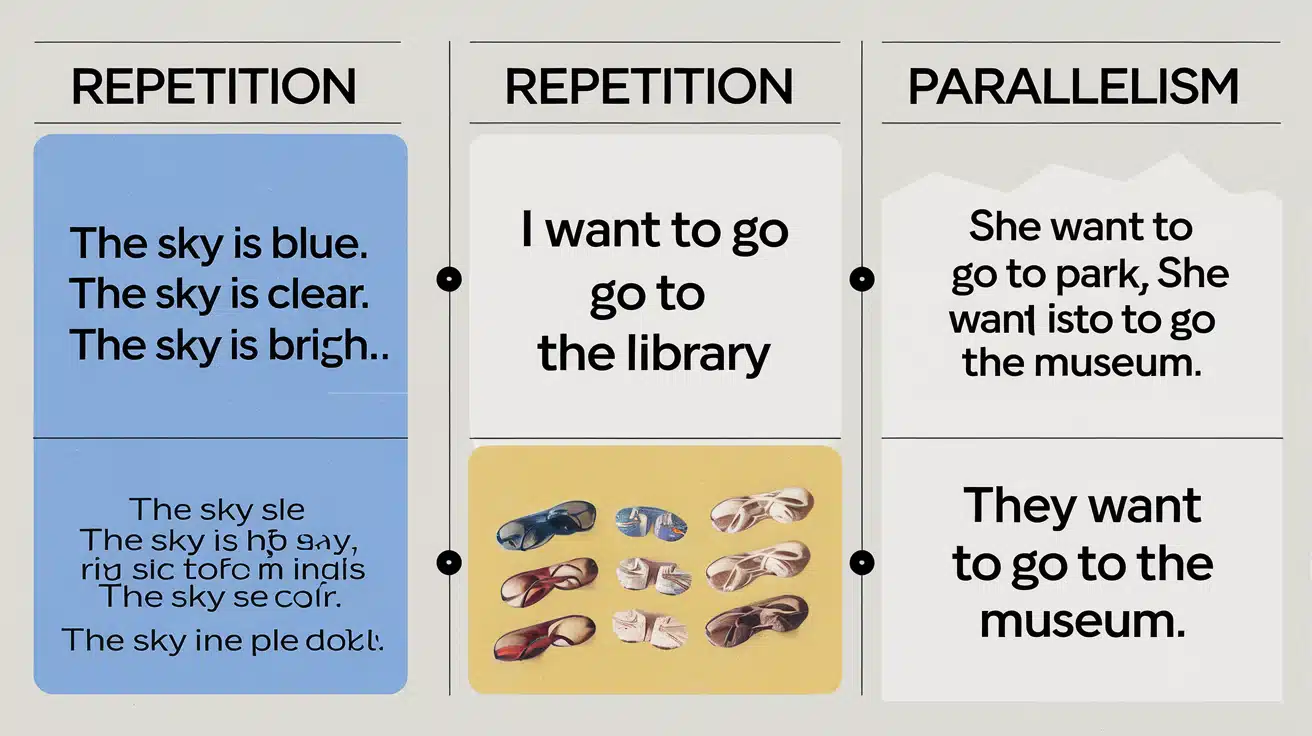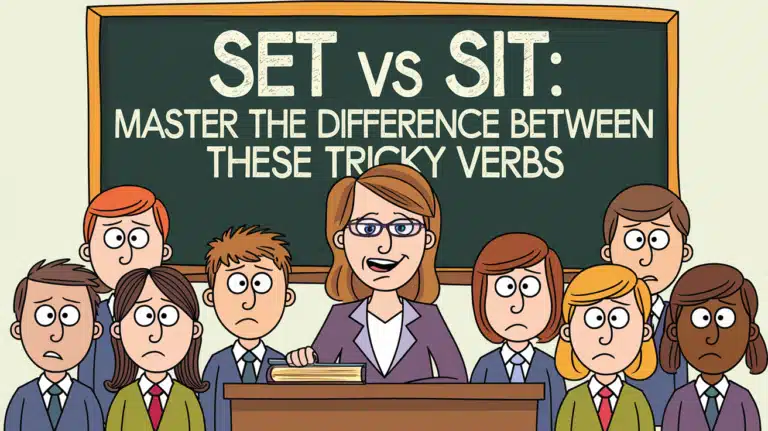Repetition vs Parallelism: what’s the difference?
Ever wondered how some sentences feel smooth and stick in your mind? Writers use two simple but effective tricks—repetition and parallelism to do this. These tools might seem similar, but they work in different ways to make writing clearer and more memorable. Let’s explore how these techniques can transform your writing!
What is Repetition?
Repetition means using the same words or ideas again to make sure they stand out. It’s a great way to emphasize something important, create rhythm, and help readers or listeners remember key points.
Types of Repetition:
- Anaphora: Repeating words at the beginning of sentences (e.g., “We will fight, we will win, we will overcome.”)
- Epiphora: Repeating words at the end of sentences (e.g., “I want to win, you want to win, everyone wants to win.”)
- Symploce: Combining anaphora and epiphora (e.g., “When we learn, we grow; when we grow, we succeed.”)
- Diacope: Repeating a word with a break in between (e.g., “The horror, the absolute horror.”)
Why is repetition effective?
- It makes ideas stick in your mind.
- It adds emotion to the message.
- It creates a rhythm that’s easy to follow.
Think about the famous line from John F. Kennedy:
“Ask not what your country can do for you, ask what you can do for your country.”
Here, repetition drives home the point, making the message unforgettable.
What is Parallelism?
Parallelism is about creating balance in a sentence. It uses the same structure for multiple ideas, making the sentence smooth and easy to read. It’s like building with matching blocks—you want everything to fit neatly.
Types of Parallelism:
- Grammatical Parallelism: Using the same parts of speech in a sentence (e.g., “She likes hiking, biking, and swimming.”)
- Semantic Parallelism: Repeating similar ideas (e.g., “He worked hard, he played hard.”)
- Phonetic Parallelism: Using similar sounds for effect (e.g., “Peter Piper picked a peck of pickled peppers.”)
Why is parallelism important?
- It makes writing clear and easy to understand.
- It gives your sentence a rhythm and flow.
- It helps connect ideas smoothly.
Consider Julius Caesar’s famous words:
“I came, I saw, I conquered.”
This sentence flows perfectly because the structure is balanced.
The Origins of Repetition and Parallelism
Both repetition and parallelism have deep roots in language.
Repetition comes from ancient oral storytelling, where repeating ideas helped listeners remember the story.
Parallelism has its origins in ancient Greek writing, where balanced structures made arguments clearer and more persuasive.
Read More About : Hustle or Hussle: Solving the Spelling Puzzle
How Are Repetition and Parallelism Different?
Although both techniques use patterns, they have different goals. Repetition focuses on emphasizing certain words or ideas, while parallelism focuses on creating a balanced structure.
| Aspect | Repetition | Parallelism |
|---|---|---|
| Focus | Words/phrases | Sentence structure |
| Purpose | Emphasis | Balance and clarity |
| Example | “The sun set, the sun rose again.” | “He likes reading, writing, and running.” |
How Repetition and Parallelism Shine in Poetry
Poetry often uses both repetition and parallelism to create rhythm and highlight important ideas.
For example, in Walt Whitman’s poem “Song of Myself,” he uses both techniques:
“I celebrate myself, and sing myself, And what I assume you shall assume, For every atom belonging to me as good belongs to you.”
Here, parallelism creates balance in the lines, while repetition of “myself” and “assume” adds emphasis.
Using Repetition and Parallelism in Your Writing
Both repetition and parallelism can improve your writing when used correctly. Here’s how to use them effectively:
Tips for Repetition:
- Use repetition to emphasize key points.
- Don’t overdo it—too much repetition can bore the reader.
- Try different types of repetition, like anaphora or epiphora, to keep it fresh.
Tips for Parallelism:
- Keep sentence structures consistent, especially in lists or comparisons.
- Use parallelism to make your writing flow better.
- Double-check for consistency in longer sentences with multiple actions or ideas.
Example:
Non-parallel: “She enjoys hiking, to swim, and bikes.”
Parallel: “She enjoys hiking, swimming, and biking.”
The second sentence is easier to read because of its balanced structure.
Everyday Examples of Repetition and Parallelism
These techniques aren’t just for fancy writing—they’re everywhere!
- Advertising slogans: Nike’s “Just Do It” uses repetition to make it stick in your mind.
- Political speeches: Barack Obama’s speeches often use parallelism for clarity, like when he said,
“We are a nation of Christians and Muslims, Jews and Hindus, and non-believers.”
Common Mistakes to Avoid
While repetition and parallelism are powerful, they can also be tricky.
Avoid these mistakes:
- Overusing repetition, which can make your writing feel repetitive and boring.
- Forcing parallelism, which can lead to awkward sentences.
Conclusion
Repetition and parallelism are powerful tools that can transform your writing. Use repetition to emphasize key ideas and parallelism to create a smooth, balanced structure. Whether you’re writing an essay, a poem, or even a tweet, these techniques will help your words stand out and stick with your reader. Remember, the key is knowing when and how to use them to make your writing clear, engaging, and memorable!







